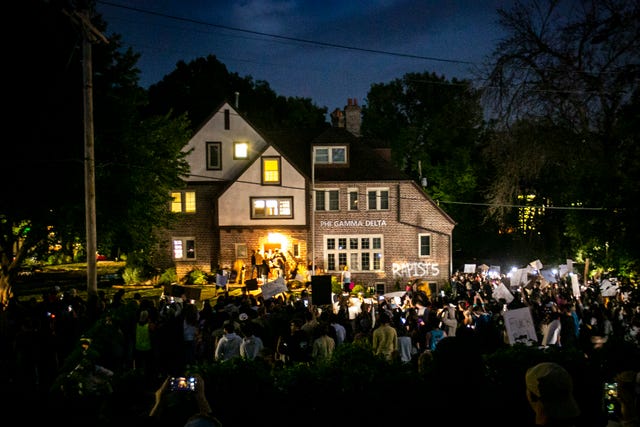The article, Protesters at Iowa fraternity demand it be abolished after sexual assault allegation emerges, was posted on The Guardian to describe the sexual assault problem at the University of Iowa. Cases of sexual assault have been on the rise in the university, with the recent case being of a 17-year old girl that was sexually assaulted by a 19-old young man. In the article, Stimson (2021) stated that the sexual assault was conducted at Phi Gamma Delta house, widely known as Fiji house. In this regard, the protest was aimed at compelling the university to take prompt measures to abolish the fraternity because this was the second case of assault after the one of the previous year.
Analysis of the social problem
Claim made and the evidence presented
The protestors at the University of Iowa were concerned by the issue of sexual assault that was on the rise. This protest was triggered by sexual allegations that occurred in August 23, which is the second sexual assault case. The protest follows a social movement concept whereby a a group of people unite against a given vice in the society. The movement is anchored on the evidence of the social problem by pointing at the case of a 17-year old female that was sexually abused by a 19-year old that was raped in a Fiji house, therefore calling for a total closedown of the fraternity (Stimson, 2021). The claim made by the protestors helps to fuel their quest for justice, and structural changes.
Emotions drummed in the readers
When describing the incident at Iowa University, the author tries to send a sympathetic emotion to the readers. This fact presents another social concept of structural functionalism theory, which argues that societies are made of structures such as norms and relationships. The assault can be termed as sociological issues given that it breaches the moral fabric that makes the society (Mills, C. W. (2000). The development of the article is aimed at triggering pity and compassion on the social problem and therefore attract the relevant authorities to take prompt action towards addressing the problem.
Sociological Lens
The sexual assault problem covered in the article can be considered more through a sociological lens. A The article takes a sociological imagination to understand the problem of sexual assault (Mills, 2000). According to Fine & Corte (2017), sociology is the study of human interactions and the causes of human behavior and their implications. The social concept related to problem at Iowa is based on the social imagination of patriarchal world, because female students are the most victims of sexual assault. Most rape victims are female, and the perpetrators are the male counterparts.
I would rate the article at “B” meaning that it has not fully included all aspects of sociology in the description of the social problem. The article takes a good approach to explain the problem of sexual assault at the University of Iowa. However, it falls short with regard to explaining the cause of the problem and the sociological impact of the problem. Although it has contributed to protestors and the attention of both the management of the university and the police department, it fails to explain the implication of the problem on the victims and girls in general.







